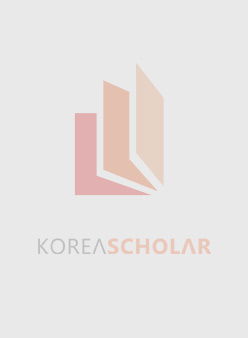간행물
대한안전경영과학회 학술대회

- 발행기관 대한안전경영과학회
- 자료유형 학술대회
- 간기 연간
- 수록기간 1999 ~ 2022
- 주제분류 공학 > 안전공학 공학 분류의 다른 간행물
- 십진분류KDC 530DDC 620
권호리스트/논문검색
2015년 대한안전경영과학회 추계학술대회 (2015년 11월) 68건
1.
2015.11
구독 인증기관 무료, 개인회원 유료
5,500원
2.
2015.11
구독 인증기관 무료, 개인회원 유료
엔진 시 운전 후 엔진 내부 주요 부품 상태를 검사하기 위해 분해하는 작업을 엔진 개방 작업 공정이라 하는데 엔진 개방 작업 공정 중 콘 로드 분해 시간이 평균 대당 187.8분으로 표준 시간 90분을 과도하게 초과하여 시급히 개선이 요구 되어 현상파 악, 원인분석, 대책수립 및 실시를 하여 개선 후 86.7 분으로 감소하여 생산성 향상으 로 인한 원가절감을 연간 4200만원 달성하였다.
4,500원
3.
2015.11
구독 인증기관 무료, 개인회원 유료
When using the original Angio Intervention, one had to put Guide wire, Catheter on patient's leg so that there were curves according to patients and the possibility of patients moving made it inconvenient to proceed. Thus, by making supplementary tool shaped of table, it minimized the inconvenience of patients and operator, increasing the convenience of the process and thereby evaluating the utility and its usefulness. The main material of supplementary tool was used with cost efficient Fomax material, and by considering the patient's lower limb, and the length of tools when doing Angio Intervention, it was made as 1300mm, 600mm at the front, 500mm at the back. Also, considering the weight of the tool, it was manufactured with thickness of 5mm and 10mm with the same design, and evaluated by using survey of 14 medical personnel using the tool in A University Hospital, Daejeon. When manufacturing and using supplementary tool, it became heavier as the thickness increased. Whereas, the thinner, the lighter the tools were, however, had unstability which cause lack of safety. Despite the fact, they responded that they had more convenience of using 5mm and 10mm tool compared to when they did not have at all, and through this, we could evaluate that the use of supplementary tool is useful to the procedure. Accordingly, when doing Angio Intervention, we could find out that it is useful to use the supplementary tools, and by reducing the weight and increasing the safety, if we can make use of this kind of supplementary tools, it would be more useful to the procedure.
4,000원
4.
2015.11
구독 인증기관 무료, 개인회원 유료
Because the lens is a tissue with the highest sensitivity, the lens shielding is very important in CT imaging. However, in clinical terms, there is a lack in the efforts in decreasing dosage on the lens, and the shielding of dosage and the effects on the imaging are researched using bismuth to evaluate the usefulness. As results of the dosage evaluation results, when there is no gantry angle when the thickness of the lens shielding material is 0mm, the dosage was 28.476mGy, and when there is gantry angle, the dosage was 20.852mGy that it was confirmed that the dosage was 27% lesser with gantry angle. It was confirmed that the dosage value decreased with the increase of thickness of lens shielding material when there is gantry angle, and when the lens shielding material was 1mm, the dosage decreased by approximately 39% compared to when it was 0mm. When there is gantry angle, the dosage values were respectively 12.788mGy and 12.776mGy for the crystalline lens shielding material thicknesses of 0.75mm and 1.0mm. In image analysis, the quantitative evaluation and the qualitative evaluation were almost constant regardless of the thickness of the lens shielding material. The optimal lens shielding material thickness to minimize the does of lens and increase the value of diagnosis in Brain CT examination is 0.75mm. Therefore, if this is utilized for easier use in clinical practices, it is considered to be able to contribute to not only the protection of the lens but the accurate diagnosis of diseases.
4,000원
5.
2015.11
구독 인증기관 무료, 개인회원 유료
4,000원
6.
2015.11
구독 인증기관 무료, 개인회원 유료
4,000원
7.
2015.11
구독 인증기관 무료, 개인회원 유료
4,000원
8.
2015.11
구독 인증기관 무료, 개인회원 유료
4,200원
9.
2015.11
구독 인증기관 무료, 개인회원 유료
6,000원
10.
2015.11
구독 인증기관 무료, 개인회원 유료
5,700원
11.
2015.11
구독 인증기관 무료, 개인회원 유료
초가속수명시험(HALT:Highly Accelerated Life Test)은 온도변화와 진동을 통해 부품초기 고 장을 빠르게 찾아 개선함으로써 제품의 신뢰성을 향상시킨다. 이에 따라 기업들은 초가속수명시 험에 집중하게 되었고 장비의 수요와 가동률이 증가하고 있다. 그러나 초가속수명시험 장비는 대부분 해외 장비에 의존하고 있어 고장이 발생한 경우 유지보수에 대한 비용이 높고 보전까지 의 시간 또한 길다. 뿐만 아니라 장비에 대한 적절한 보전절차가 없어 비용과 시간의 손실이 발 생되는 실정이다. 본 논문에서는 국산화 개발중인 초가속수명시험 장비에 고장유형과 원인에 따른 계획보전 활 동을 진행 할 수 있도록, FMEA(Failure Modes and Effects Analysis)를 사용하여 계획보전절 차를 제시하였다.
4,000원
12.
2015.11
구독 인증기관 무료, 개인회원 유료
시멘트제조공정에서 중요공정인 슬래그 미분말 공정 중에서 분슬래그 이송공정 정 지시간을 조사해 보니 84.6% 차지하여 생산성의 매우 낮은 실정이라 시급히 개선이 요구 되어 QC 문제해결 과정을 통해 개선전 3.45 (h/일)에서 개선후 1.09 (h/일)으로 낮 추어 연간 5400만원을 절감하였다.
4,500원
13.
2015.11
구독 인증기관 무료, 개인회원 유료
4,000원
14.
2015.11
구독 인증기관 무료, 개인회원 유료
4,000원
15.
2015.11
구독 인증기관 무료, 개인회원 유료
4,000원
16.
2015.11
구독 인증기관 무료, 개인회원 유료
4,500원
17.
2015.11
구독 인증기관 무료, 개인회원 유료
4,300원
18.
2015.11
구독 인증기관 무료, 개인회원 유료
4,300원
19.
2015.11
구독 인증기관 무료, 개인회원 유료
4,000원
20.
2015.11
구독 인증기관·개인회원 무료
도시철도 기관사는 일상적 교번근무의 제도적 틀에 따른 심리적, 신체적 피로와 긴 장감을 경험하는 한편, 사고 및 장애발생의 가능성을 늘 염려하면서 주어진 과업을 수 행해나가고 있다. 즉, 이들은 항상 이례상황의 발생가능성을 염려하면서 과도한 스트 레스를 느끼게 되는데, 이는 공포불안과 분노혐오라는 부정적 정서를 유발시키는 원인 이 된다. 이 같은 부정적 정서는 기관사의 일과 삶의 균형에 상당한 손상을 주는 요인 이 된다. 본 연구는 도시철도 기관사의 이례상황 스트레스가 기관사의 정서와 일과 삶의 균 형에 미치는 부정적 영향을 살펴보고 이 같은 일련의 관계에서 기관사의 이례상황 스 트레스를 완화하고 일과 삶의 균형을 제고할 수 있는 제도적 방안이 무엇인지를 살펴 보는데 주된 목적을 두었다.

